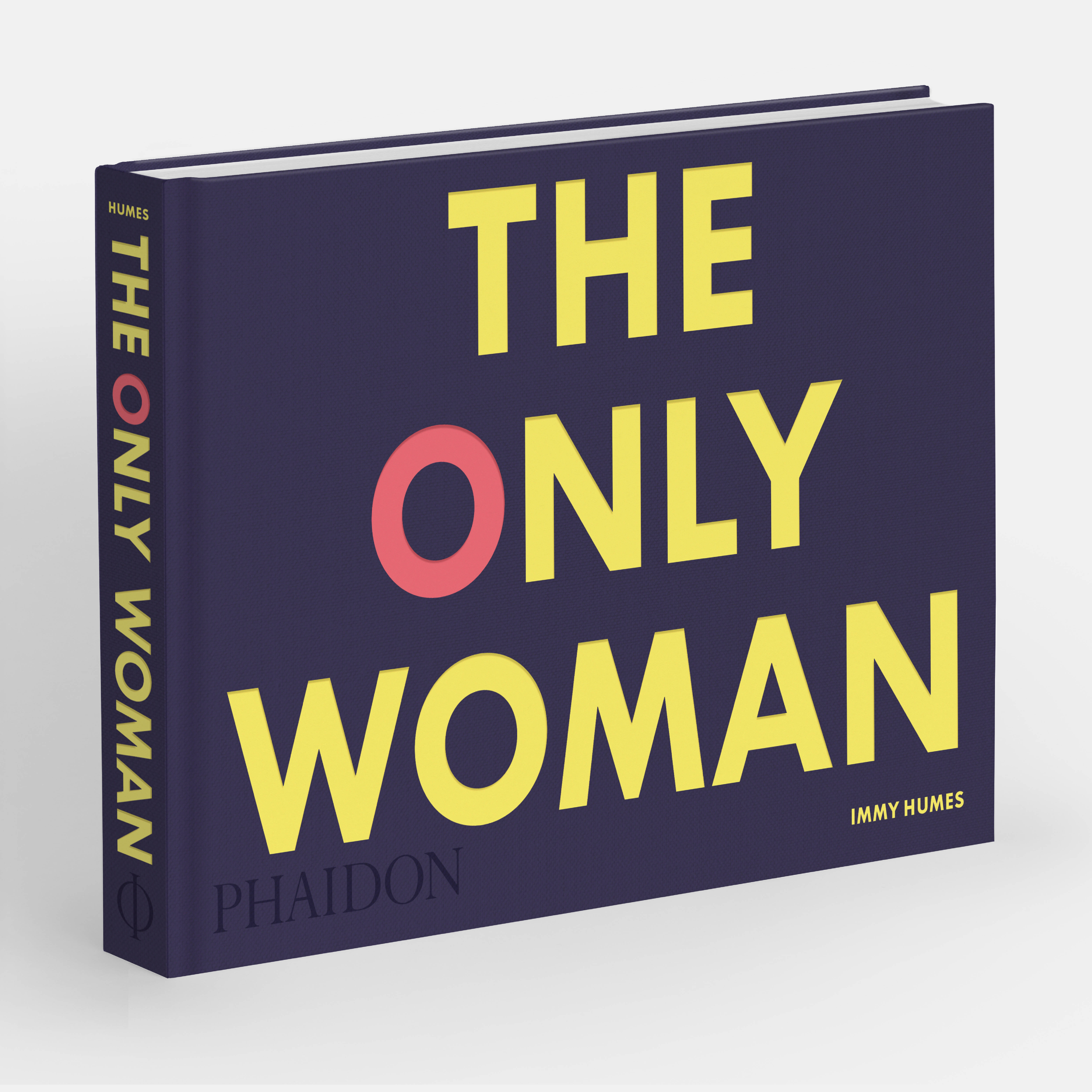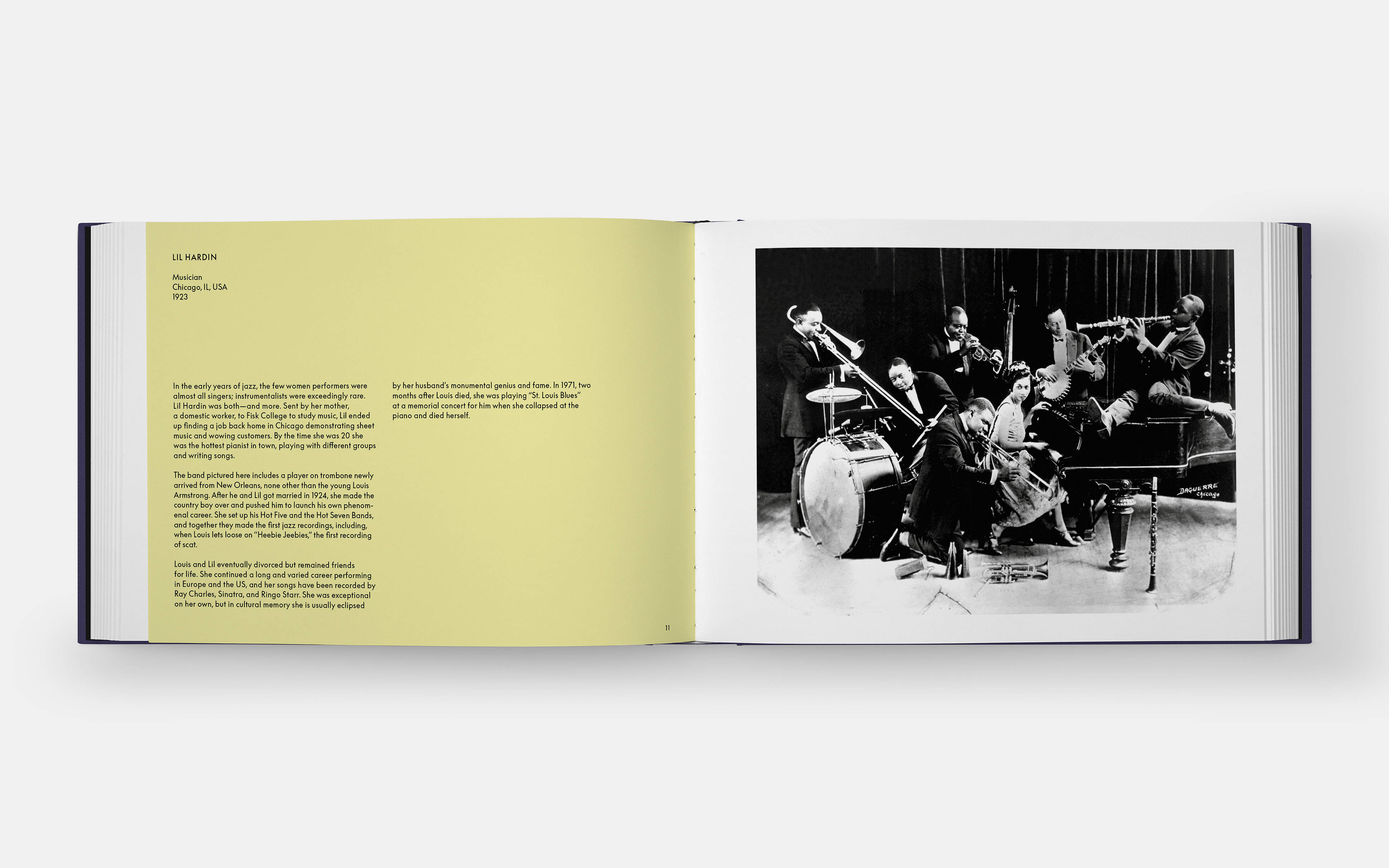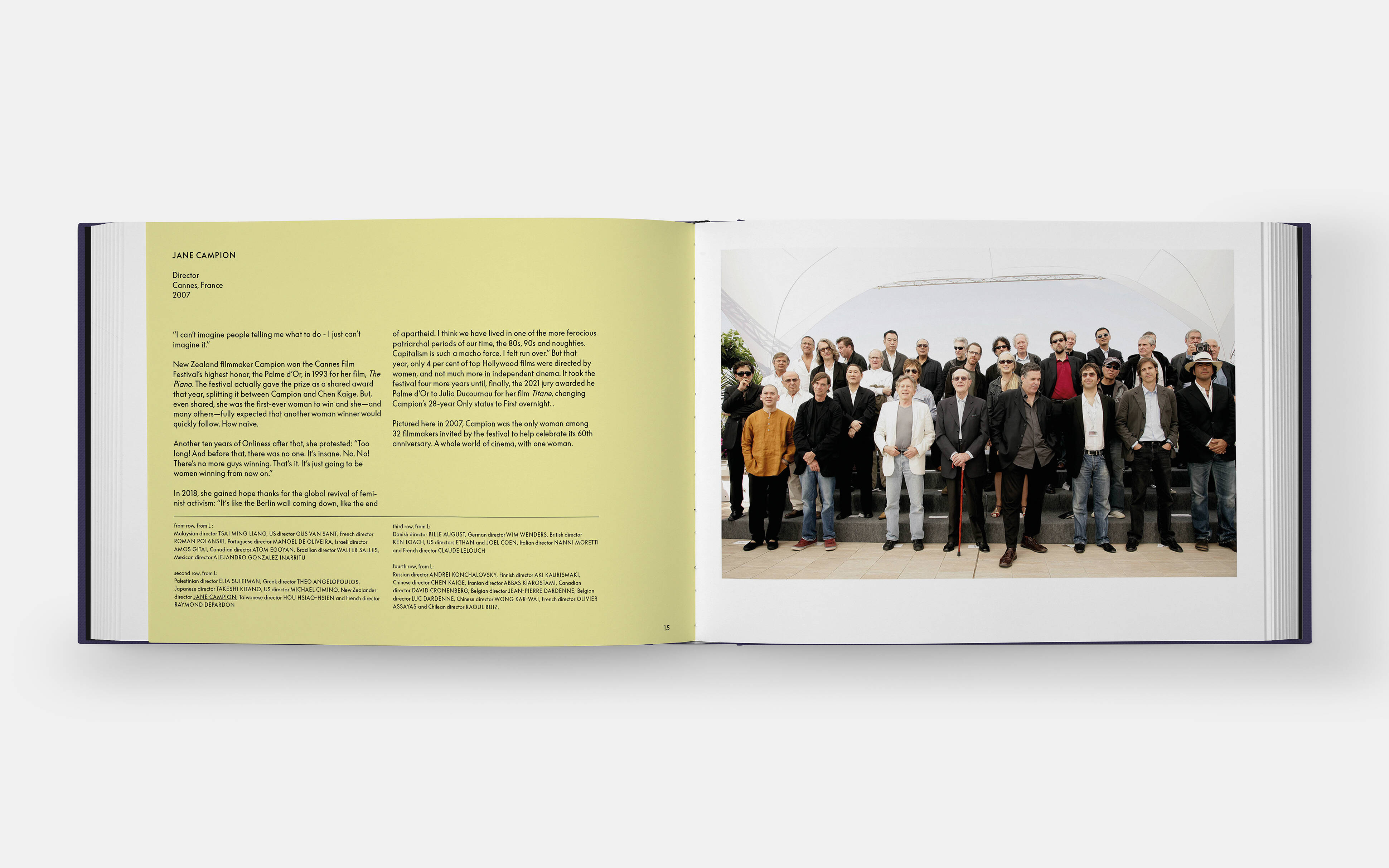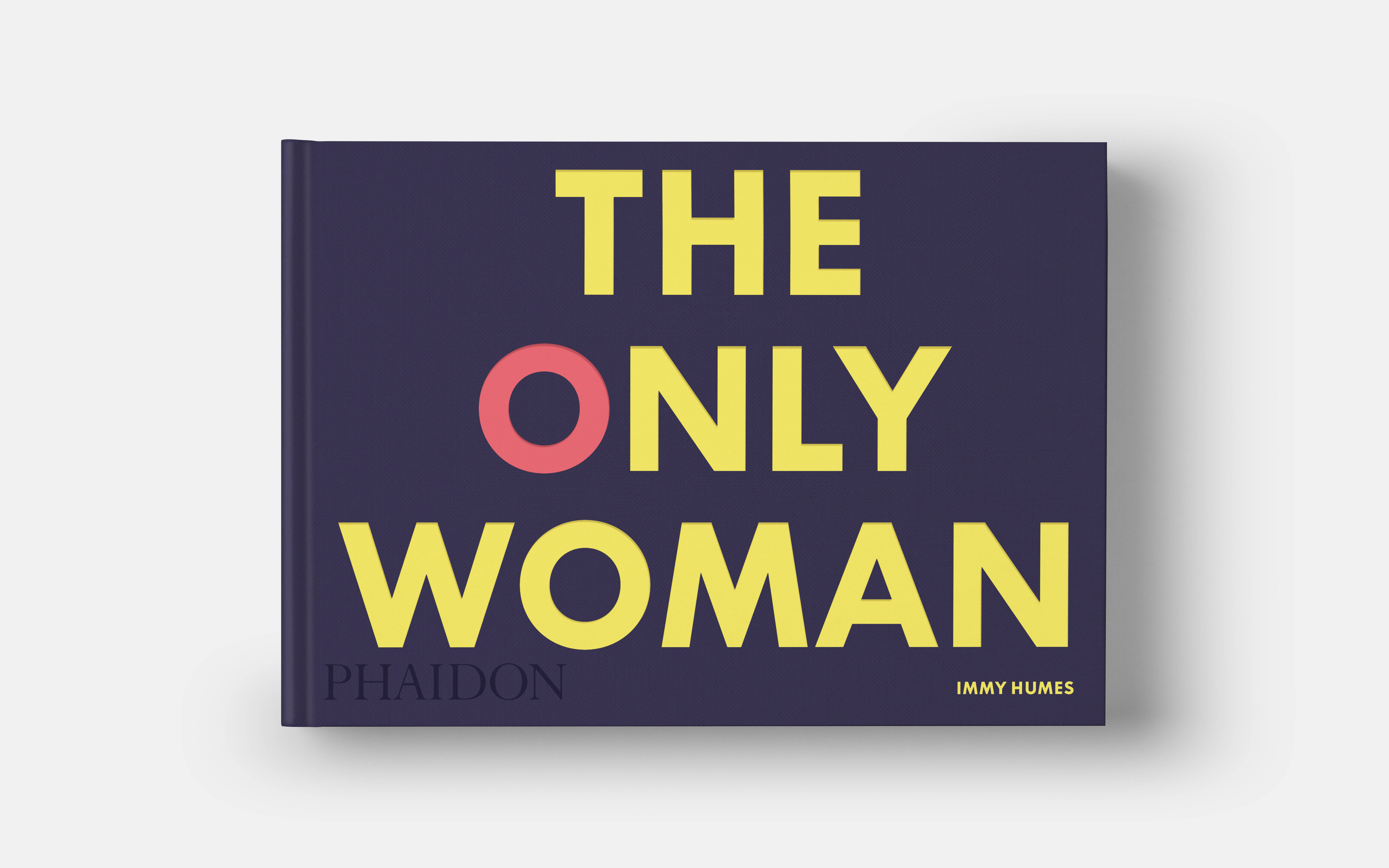
All you need to know about The Only Woman
Examine the gender politics at play in this photobook of singular women, making it in a man’s world
What connects the American marathon runner Katherine Switzer, as photographed competing in the Boston Marathon in 1967; jazz pianist Lil Hardin, captured beside her future husband, Louis Armstrong, and the rest of her band, in Chicago in 1932; Marie Curie, the eminent Belgian scientist, as pictured at the first Solvay conference of physics and chemistry in 1911; and Satsuki Katayama, the Japanese politician and cabinet member, in the official photo of the 2018 declaration ceremony, which introduced Shinzo Abe’s new government in Tokyo’s Imperial Palace?

Pages from The Only Woman
The answer is that in every single instance, the female figures mentioned are the only woman in the picture. This kind of picture, of a lone female in among a group of males, fascinates Immy Humes, the author and Oscar-nominated documentary maker. In the past, she’s used film and video to tell powerful, true stories of social and political importance. In her new book, The Only Woman, however, Humes has moved away from the moving image to gather together these solitary females in photographs, which she has been collecting for many years, to tell individual tales of exceptional women in a world of steep gender inequality.
Humes is a New Yorker, but her book spans both space and time, taking in 100 images from Mexico to Iceland, and from as early as 1862 and as late as 2020. Famous figures such as the Suffragette Emmeline Pankhurst and the Congresswoman Shirley Chisholm, are reproduced as well as more obscure women, such as the University of Missouri’s first female graduate, long misidentified in the photo as a secretary, since it was assumed women couldn’t have been med grads.
In each case, Humes devotes two pages to these people, reproducing the found image, telling its story in sharp, succinct prose. Readers of the book will learn, for instance, that JoAnn Morgan, the first female engineer and the first female executive at the Kennedy Space Center, ignited her interest in science by blowing up her family’s patio with her chemistry set, and, rounded off her career by lamenting the lack of feminine faces in her work photographs over the years; or that the New Zealand film director Jane Campion, who despaired at the lack of gender diversity in the movie business, and believes the late 20th-century and early 21st-century was one of the most ferocious, patriarchal periods of our time.

Pages from The Only Woman
Readers will be left to decide whether they agree with Campion or not, yet no one could dispute that this important, powerful and engaging book shows just how some singular women have triumphed, despite the odds on show in every picture. To find out more and order your copy of The Only Woman go here.

The Only Woman